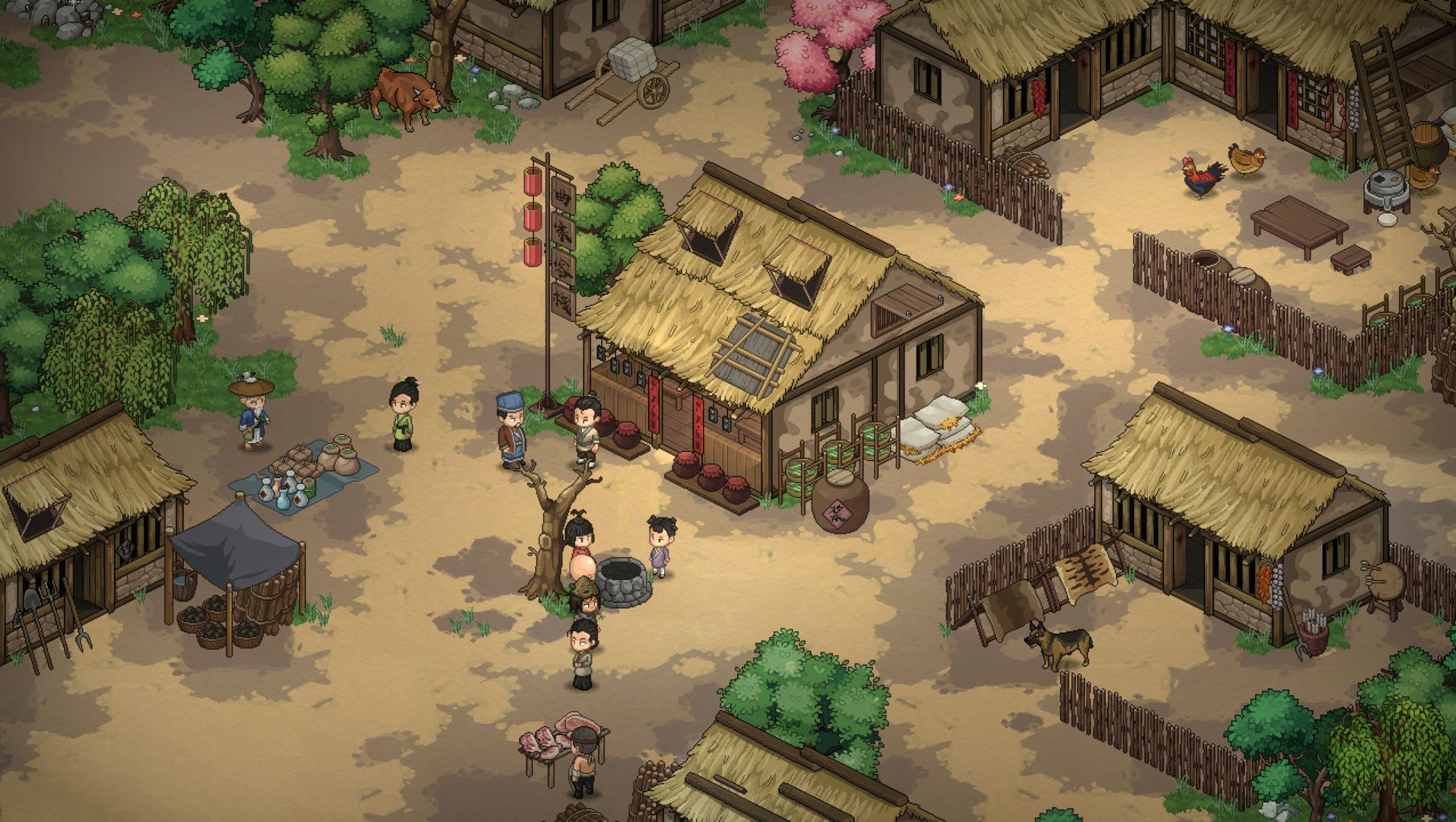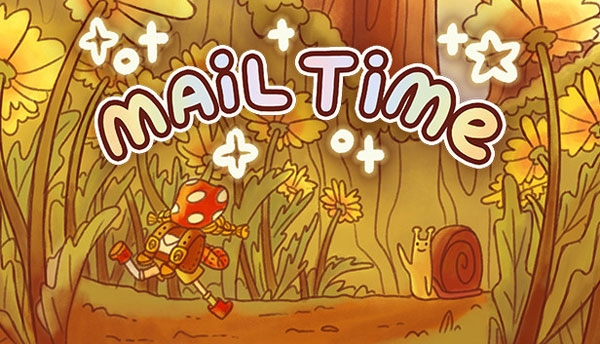Another single-player game quietly goes viral as 4,000 people give it 84% exceptional reviews

Just after the release of the EA version on March 8, some practitioners in the indie game scene are exclaiming that the new title Warrior Rivalry is expected to be the top-selling single-player game of the year. Right after its release, the game has stormed into the top three of Steam’s Hot 100, and in the past less than two weeks, the highest number of simultaneous online users has been close to 30,000.
At the same time the game’s word of mouth has also remained at a good level, with over 4,000 player reviews currently giving it a particularly positive 84%. Looking through the comments section, despite the fact that the EA version of the game still has many imperfect systems and details that need to be optimised, players generally approve of its conception and look forward to the full picture of the game in the future.
The game industry as a whole is showing signs of a slight rebound this year, but the argument that it’s a small year for domestic single-player hasn’t completely subsided either.
01 An interesting ORPG framework.
Objectively speaking, although the EA version has just been opened, the product idea, design framework and content volume presented in “Warrior Rising” is beyond my expectations, and compared to the demo released at the previous New Product Festival, it can be said to be sincere. This product builds a framework similar to an ORPG (open-ended RPG), building a relatively complete martial arts mini-world on a sub-base for players to explore and adventure.
The open-ended design chosen for this game is similar to the open, sandbox single-player products that have become popular in China in recent years, allowing players to first build an initial character based on a Roguelite approach of customising additions, Roll talents, choosing early weapons and props, etc.; players then explore semi-open maps with their character in search of growth; eventually, based on semi-open choices and long hours of character/team Ultimately, the player achieves certain conditions based on semi-open choices and long character/team development to trigger the corresponding ending.
The game differs from the mainstream open-ended, sandbox single player in several ways.
One is that the game is designed to be played as a wargame, and by extension, the weapon system and feat system are also built around the wargame. This makes, on the one hand, the combat-related system more refined, with weapons including not only swords, spears, clubs, daggers and fists, but also pens, fans, pianos and lutes, for a total of eleven types of weapons, each with different combat styles and characteristics.
On the other hand, all weapons have their own growth characteristics, and in addition to the increase or decrease in numerical values and affixes, the different classes of weapons also have a change in the range of effects in combat, while at the same time, all external feats are designed based on the corresponding weapons, so that external feats and weapons are not compatible unless under special circumstances.
This combat-weapon-growth system widens the player’s choice of combat gameplay to a large extent, and leaves a lot of room for exploration.
Secondly, there is a social system outside of combat. All NPCs in the game can be interacted with, and most of them have independent interaction options, and important NPCs can become life-and-death friends with players.
For example, the growth of the player’s six attributes of benevolence, righteousness, propriety, wisdom and courage are all closely related to the choices they make in events (such as doing good or evil), the results of their interactions with other NPCs (such as giving gifts or stealing), and even the results of their interactions with objects on the map (such as following the NPCs’ belongings), determining whether the player becomes a warrior who does justice, a villain who is full of evil, or a thief who steals chickens and dogs.
This social system is used throughout the game, with a large number of social outcomes feeding into one’s growth. For example, if you make a good connection with someone, you will be able to join the other side’s forces and gain the appropriate skills and weapons, and eventually grow up; for example, if you save a bandit on the road, you will learn the location of the fortress and even further trigger the branch line of rescuing the hostages; and for example, if you give more gifts, you can improve the goodwill of NPCs and have the opportunity to barter for rare treasures on the other side!
The wargame and its branching system broaden the in-game growth path, while the social game and its branching system broaden the semi-open world that can be explored. The combination of these two preserves the martial arts worldview and gameplay based on “martial arts” and “kung fu”, while maintaining the freedom of an ORPG.
The third point is the sheer amount of detail that underpins it. One of the things I like about Warrior Rising is that the game incorporates a lot of classic RPG details, from the pixel art (the character artwork and in-game character movements are exceptionally well done), to small events (such as kowtowing to a hero statue 100 times and shaking off the statue’s stone sword), to the stems (famous lines, old and new dark sayings, and classic bridges), to the various interactive effects, to the numerous The ending CG.
These details give me a strong sense of the old school of single player game makers and are the key to the current EA version’s lack of plot but plenty of exploration points.
In addition to the aforementioned few highlights, Warrior Rising actually has a lot of established systems, such as the life skill system, martial arts system, clan system, day and night system, food mood system, and so on. In my opinion, all the systems work together to form a very well-rounded and interesting ORPG structure, which can be a fish out of water for players who are keen on multi-system gameplay.
02 The martial arts are in place, but how far is the chivalry?
Compared to the perfect system structure, the game also has many issues that have caused a lot of debate among players, which basically stem from the level of optimisation of each sub-system and the amount of content filled in each system.
For example, under the social system, the gift-giving game brings too much revenue, because there is no stage limit for NPC goodwill, or the gift-giving revenue decreasing mechanism restriction, which leads to players having money to send to their friends in life and death, and furthermore, causes the problem of too much brush flavor. Another example is the lack of fullness in the image of NPCs, which stems from the lack of amount of personal storylines of NPCs and the lack of trust cultivation process between them and the players. There is also the issue of the lack of encounter plots, which leads to a lack of rituals in the acquisition of many advanced feats and secrets.
Similar to the above issues, a large amount of inadequate optimisation and insufficient filler content has skewed the current version of the game experience towards warping, allowing most problems to be solved by swiping money and giving gifts. This has resulted in a martial arts worldview that appears to be empty of “martial arts” and lacking in “chivalry”.
In fact, many enthusiastic players have frequently suggested optimisations and improvements to the game, and after listening to the suggestions, the producers have indicated that they will continue to improve the gift-giving mechanic, partner quests, sect bounty events, late challenge goals and more.
So judging from the quality of the game so far, the potential of the existing framework, as well as the attitude of the producer and the enthusiasm of the players, there is hope that Warrior Rising will continue to transform and become a truly excellent indie game with a pure martial arts flavor.




